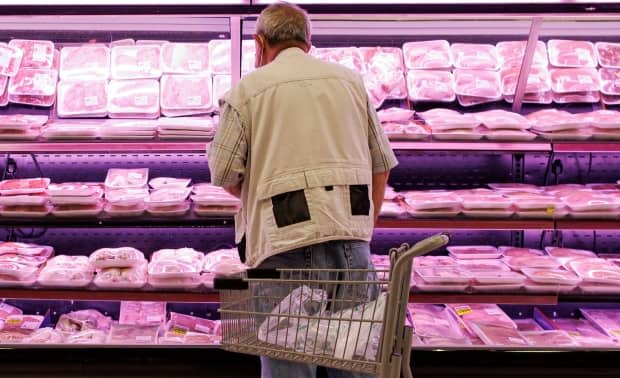Loblaw earns $529M in Q4 profits as Canadians struggle with rising food prices

Loblaw Companies Ltd.'s fourth-quarter results beat analysts' expectations on Thursday as the Canadian retailer was boosted by its pharmacy business and a continued demand for groceries.
The company says it earned a profit available to common shareholders of $529 million. Its fourth-quarter revenue rose about 10 per cent to $14.01 billion from the same period last year, topping estimates of $13.75 billion.
On an adjusted basis, Loblaw earned $1.76 per share, beating analysts' expectations of $1.71 per share.
Chief financial officer Richard Dufresne said during a Thursday morning earnings call that the company's gross margins in food retail had peaked in mid-2021, before Canada's current inflation episode began, but hadn't returned to those levels since.
He then said that the earnings results "are further evidence that [food] retail prices are not growing faster than costs, and the company is not taking advantage of inflation to drive profits."
WATCH | Loblaw profits rise 12 per cent as food prices continue to rise:
Dufresne made a similar statement during the third-quarter earnings call last November.
While inflation cooled to 5.9 per cent in January, food prices continued to rise. Prices for meat, baked goods and vegetables increased at a faster pace — and Canadians are feeling the pressure during their regular grocery runs.
"I've been trying to find savvy ways to keep things cheaper," said Tramika Blackwood from Toronto. "It's annoying that it's going up."
Others are growing frustrated with food retailers, as critics say that "greedflation" has companies profiteering during a time when grocery prices are accelerating at the fastest rate in over 40 years.
"The little money I make, I spend all on rent and groceries. Surviving shouldn't be that expensive," said Mena Aparicio, also in Toronto.
"Companies, they have no heart. They always want to make the same amount or more. So now, their pockets are full. Always, all the time."
Consumers spending on essentials
Retailers are leaning on sales of food and medicines as rising prices are forcing consumers to prioritize spending on essentials and trade down to cheaper, private-label alternatives from higher-priced brands.
Loblaw posted a 9.7 per cent rise in retail segment sales, reflecting strong growth in its food and drug businesses, with steady demand for cough and cold medicines, as well as high-margin beauty and cosmetics products.

Retail bellwether Walmart Inc., however, forecast its full-year earnings below estimates on Tuesday, and warned that tight spending by consumers could pressure profit margins.
Loblaw, on the other hand, expects its full-year 2023 adjusted earnings per common share to grow in the low double-digits compared with the average analyst estimate of 9.64 per cent, according to Refinitiv IBES data.
A lack of competition
Phoebe Stephens, an assistant professor of food security and sustainable agriculture at Dalhousie University in Halifax, said that grocery retail in Canada is heavily concentrated. About 80 per cent of sales controlled by five major chains, including Loblaw, she said.
"Whether or not 'greedflation' is at play is really, really difficult to nail down," Stephens said, noting that food processing and manufacturing are also heavily concentrated parts of the sector.
"So there is a lack of competition there as well. And that might be allowing these companies to raise prices more so than they would be able to if there was greater competition."

Several converging factors are putting upward pressure on food costs, including geopolitical events like the war in Ukraine, as well as climate-related disasters like a surge of avian flu in North America that is driving up poultry prices.
"But there is also a question mark about the role of market concentration and a lack of competition in driving up these food prices," Stephens said. "Because of their unique position in the food system, grocery retailers actually have power over both suppliers and consumers."


